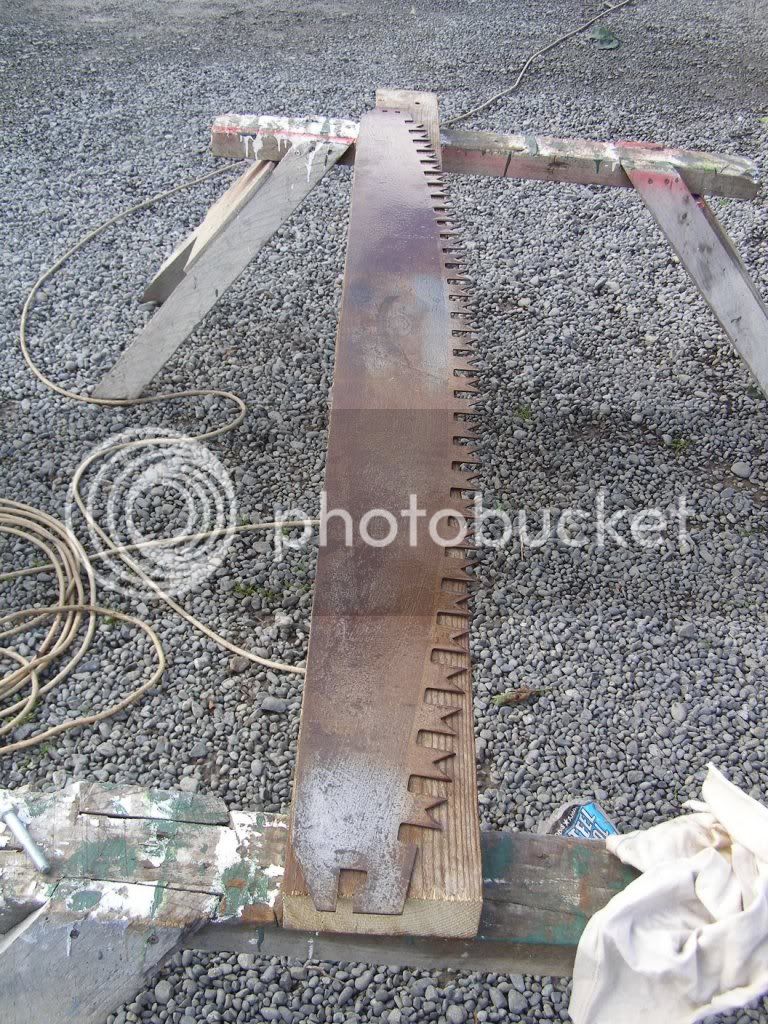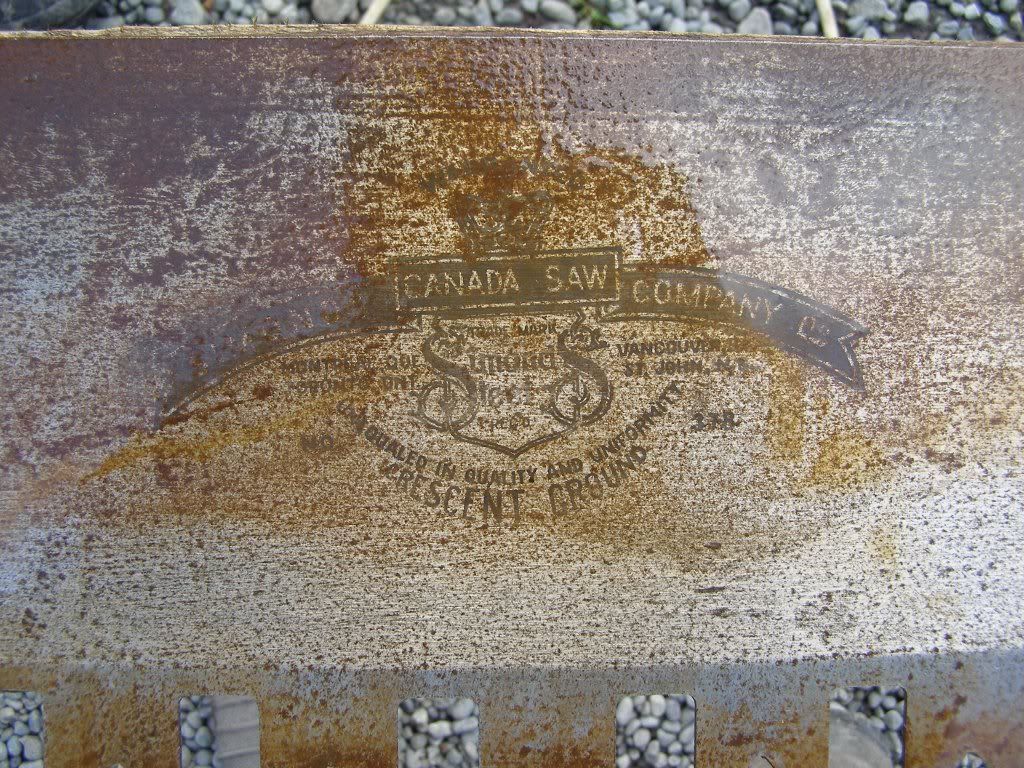Simonds Royal Chinook crosscut saw
Thank you for the info/comments. Here is some more info I have.The blade appears to be unused. It still has factory set and sharpness, all teeth are present. I have seen others with the end teeth broke off to protect their hands, a sure sign of use. Simonds lists these saws up to 7' long then states , longer lengths available upon request. I have seen older Mallory's logging supply catalogs that listed 8,9,10,12 foot saws but I believe they ordered them for the West coast market. This one is 8 1/2' (102") and just about 9' with handles attached. I believe this was special ordered and never used. Probably saved by chainsaws. The grind on this blade is clearly visable. It's a Radial Crescent grind. I have only seen this grind on the Royal Chinook line of saws, Does any body know of other saws that use this type of grind? I would be interested in hearing from any one else who has a Royal Chinook and some pic's would be nice as well. All comments/info would be great. Thanks again...Jon C
Thank you for the info/comments. Here is some more info I have.The blade appears to be unused. It still has factory set and sharpness, all teeth are present. I have seen others with the end teeth broke off to protect their hands, a sure sign of use. Simonds lists these saws up to 7' long then states , longer lengths available upon request. I have seen older Mallory's logging supply catalogs that listed 8,9,10,12 foot saws but I believe they ordered them for the West coast market. This one is 8 1/2' (102") and just about 9' with handles attached. I believe this was special ordered and never used. Probably saved by chainsaws. The grind on this blade is clearly visable. It's a Radial Crescent grind. I have only seen this grind on the Royal Chinook line of saws, Does any body know of other saws that use this type of grind? I would be interested in hearing from any one else who has a Royal Chinook and some pic's would be nice as well. All comments/info would be great. Thanks again...Jon C






